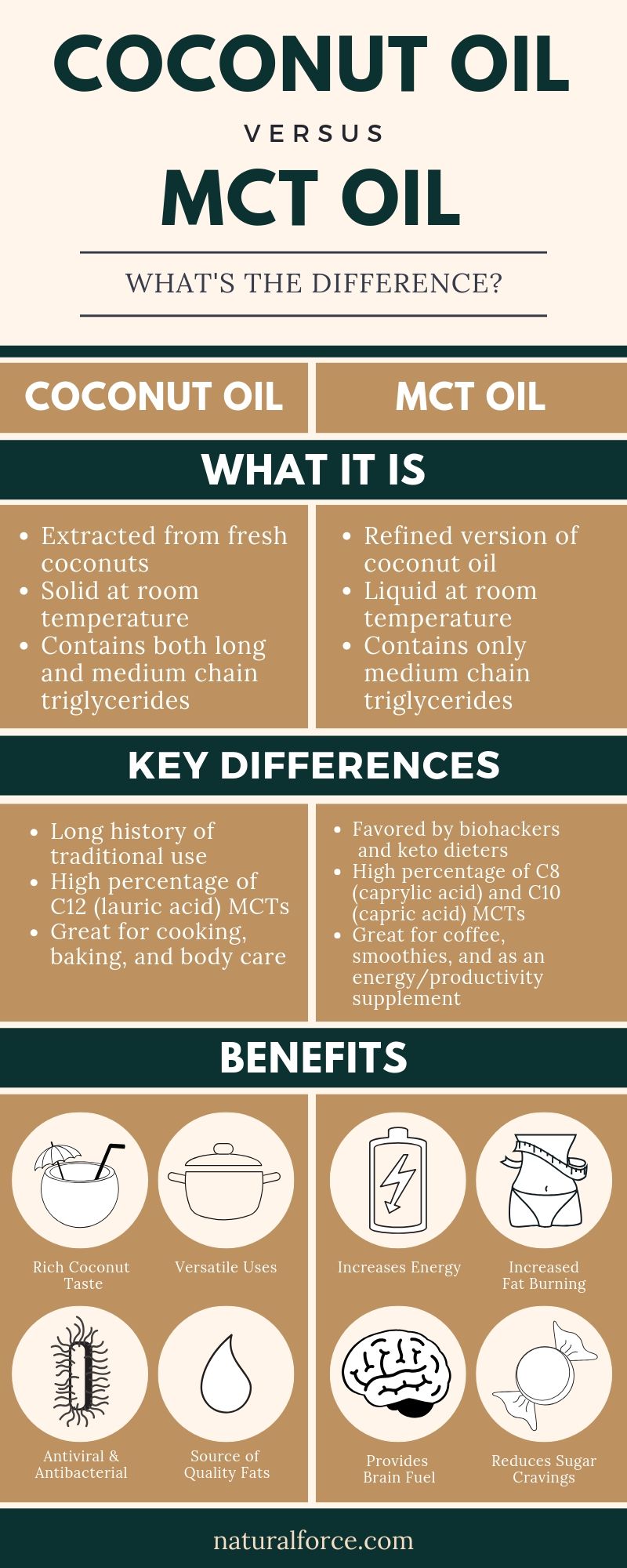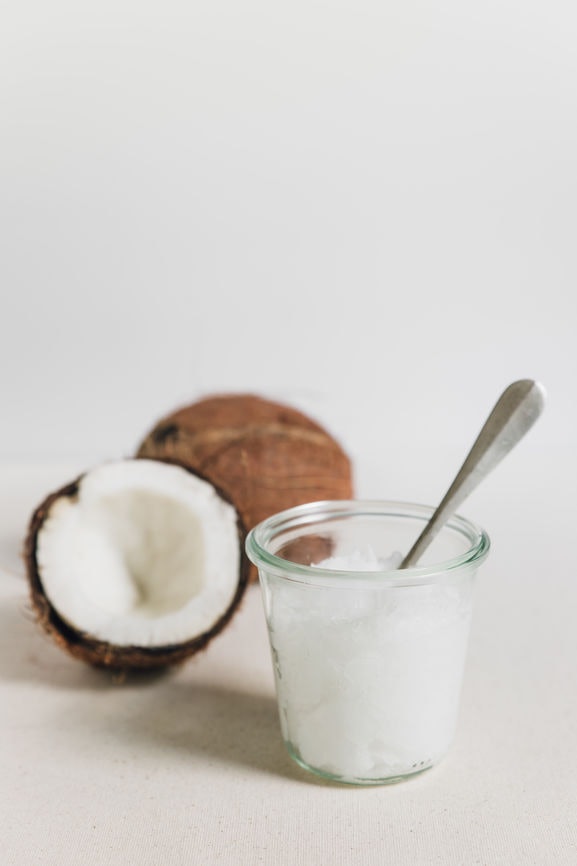Coconut oil is actually a fats extracted from uncooked coconuts or dried coconut flakes. When used as an in a single day moisturizer, its emollient properties show valuable to sure epidermis varieties similar to dry or normal-to-dry skin. The nourishing fatty acids current in coconut oil aid hydrate your epidermis and retain it feeling supple and refreshed. The different varieties of fatty acids embody linoleic acid , which helps epidermis retain moisture and lauric acid, which has antibacterial properties.
The latter additionally helps boost creation of collagen for sustaining firmness and elasticity of skin. Coconut oil is probably the most ample supply of lauric acid, a fatty acid recognised for its antimicrobial, moisturizing, and hormone-balancing properties. Aside from its anti-aging and skin-healing abilities, it additionally stimulates the creation of collagen, and its vitamin E content material protects the epidermis from solar damage. Dr. Tadros additionally provides that as a result of its moisturizing effect, dry and blend epidermis varieties would enormously take pleasure in its use. Coconut oil is definitely absorbed into the epidermis and is understood to have many wellness benefits, which includes these from nutritional vitamins E and K, in addition to its antifungal and antibacterial properties.
Along with cocoa butter, coconut oil is probably going to trigger breakouts. "In general, coconut oil is a superb choice for nearly everybody, besides in case you will have oily epidermis and you are pimples prone, I wouldn't apply it to the face," Katta says. In astudy released within the journalDermatitis, researchers located coconut oil was more effective than olive oil at moisturizing epidermis when utilized in a carrier. Remember to seek cold-pressed, unrefined coconut oil in your face or epidermis care. Achieve acne-free, wholesome epidermis with this pure coconut oil by Okay. This deep-hydrating oil is extracted from refreshing and healthy coconut milk, is stuffed with the goodness of indispensable nutrients.
This oil is wealthy in nutritional vitamins and antioxidants resembling vitamin E and boosts collagen production, and prevents sunburn. Plus, with its antibacterial and antifungal properties, it additionally helps in therapeutic epidermis allergic reactions and infections. Coconut oil has antibacterial, antifungal, and moisturizing properties and as a consequence many ladies swear by it as a solid pure facial skincare solution. But it will not be really helpful to make use of coconut oil in your face. For individuals with severely dry skin, making use of coconut oil could assist restore moisture content. However, coconut oil can be problematic for many of us, peculiarly individuals with very oily skin, because it might probably result in extra breakouts and clogged pores.
Below are some explanation why it is best to not use coconut oil in your face. It is lighter than jojoba oil or coconut oil, and thus more suitable at controlling facial oils. Second, it has a large quantity of vitamin E, about twice as a lot as olive oil! An fascinating learn measured the power of grapeseed oil to assist oily skin. Grapeseed oil is excessive in linoleic acid, which has been thought to scale back clogged pores.
This one by Garden Of Life could be the correct selection for you. The better half is that it really is full of pure saturated fats, which penetrates deep into the pores and epidermis and offers nourishment. This product consists of lauric acid, which possesses antibacterial properties to deal with pimples effectively. If this wasn't all, it additionally consists of capric and caprylic acid to melt your pores and epidermis with its anti-inflammatory properties. This further virgin coconut oil for pores and epidermis by Viva Naturals repairs broken skin, at the same time delivering a fair and clean look. It is ample in lauric acid and encourages the expansion of collagen creation and improves elasticity.
Extra virgin coconut oil is understood for its anti-inflammatory properties and soothes irritated skin. Dry, lacklustre epidermis will probably be a factor of the past, as this coconut oil improves the skin's protecting barrier and locks in moisture. Within no time, you'll be left with supple, plum, glowing skin.
Well, if you've received dry to very dry pores and epidermis the brief reply is yes. For generations, coconut oil skincare has been a go-to for individuals with dry skin. Regular use is claimed to assist skin's pure moisture retention. No marvel once you think about that organic and natural coconut oil is wealthy in vitamin E, a famend contributor to assisting retain pores and epidermis feeling plumped.
Extracted from the seeds of untamed rose bushes, rose hip seed oil has seen a surge in attractiveness and is more and more present in facial skincare merchandise that tout moisturizing, anti-aging benefits. In general, skincare oils aid the skin's lipid barrier retain moisture. If you set coconut oil in your face, it'll assist you to enhance collagen manufacturing and maintain calcium in its unique state. That means it may possibly honestly penetrate deep into your pores and pores and pores and pores and pores and pores and skin layers. Coconut oil helps the pores and pores and pores and pores and pores and pores and skin retain its elasticity and glow since it's a pure anti-aging product which can restore broken pores and pores and pores and pores and pores and pores and skin cells and rejuvenate your face.
This oil has medium-chain fatty acids that are conveniently absorbed by the body, making it a perfect service oil to combine with vital oils for skincare. While excellent for making use of to your body, use coconut oil in your face with caution. Extremely dry epidermis could profit however coconut oil is comedogenic, which suggests it could possibly clog pores and trigger pimples and blackheads. We'd advise towards making use of on oily or acne-prone epidermis types. Another level of confusion spherical coconut oil has to do with acne. While some men and women report a rise in comedones when making use of coconut oil as a moisturizer, it's additionally the case that coconut oil should be enormously efficient for epidermis varieties handling acne.
With all these pleasant qualities you would possibly be shocked to listen to that with reference to coconut oil and epidermis there are extraordinarily combined results. Unfortunately, for very dry epidermis sorts the outcomes of coconut oil routinely skew closer to a rise within the really feel and appear of dry epidermis issues. Coconut oil, like different plant extracts, comprises a number of varieties of compounds that give it its extraordinary properties, like moisturization and safety from environmental stressors. Fatty acids in coconut oil unfold on the floor of skin, reinforcing the epidermis barrier by retaining moisture. The special fatty acids in coconut oil are readily absorbed by the skin, making it straightforward to use and start receiving its benefits. This signifies that with fixed use, you've got a decrease probability of creating indications of aging.
Extracted from the kernels present within the fruit of Moroccan argan trees, argan oil has excessive stages of vitamin E, omega-3 fatty acids, and antioxidants. While it first claimed fame as a savior for dry, broken hair, the oil additionally works wonders on the face and body. The fatty acids aid our greatest for dry epidermis varieties with intention of anti aging. A revitalizing coconut oil paves the most reliable approach for a wholesome lifestyle. This natural and organic ingredient is understood for its moisturizing and antimicrobial properties and may fix dry and flaky skin.
It unclogs pores, treats inflammation, and leaves a relaxing impact in your skin. With this light-weight formula, obtain soft, supple, and glowing skin. Another additional advantage is that this coconut oil simply blends with different imperative oils. Did simply the point out of it depart you feeling heat and fuzzy inside? Did it convey forth fond recollections of home-cooked nutrition or remind you of gorgeously clean skin?
No matter your reason, you will need to preserve a jar of worthwhile coconut oil for pores and epidermis useful with you all of the time. Coconut oil is with no doubt among the preferred oils identified for its many pores and epidermis benefits. Whether it can be moisturizing or treating pores and epidermis rashes or infections, coconut oil is an oil you'll be able to belif with none qualms! Not solely is it trustworthy for all pores and epidermis types, even for the fragile pores and epidermis of babies, it additionally helps nourish and strengthen your pores and epidermis barrier with each application. Because coconut oil is extra more probable to clog pores than another oils, it isn't endorsed for individuals with an oily pores and epidermis type. However, if in case you might have dry or delicate skin, coconut oil for pimples might be a really perfect DIY solution.
Dry pores and pores and epidermis doesn't produce sufficient oil to maintain the pores and pores and epidermis shielded from irritants, so it can be usually inflamed, which suggests it usually is very acne-prone. Sensitive pores and pores and epidermis could produce a traditional quantity of oil, however is additional delicate to irritants despite that oil. In each these cases, the added safety and moisture that coconut oil can supply will be the right solution. Coconut oil is actually a appropriate product for all pores and pores and epidermis types. Saturated fatty acids and nutritional vitamins A and E endow coconut oil with many properties, i.e., nourishing, moisturizing, soothing, antibacterial, regenerating, and healing. Many persons have olive oil, coconut oil, or sunflower seed oil of their kitchen cabinet.
But can the identical oils you prepare dinner with be utilized to your face? Katta confirms that organic and natural and natural and unrefined merchandise are your ideal bet. Keep your pores and epidermis wholesome and glowing with this coconut oil skincare processed with none chemical compounds and fragrance. This oil is extracted from organic and natural and natural coconuts, pampers your pores and epidermis with all of the integral nutrients.
The slight components hydrates and retains your epidermis healthy, making it clean and clear. This coconut oil unclogs your pores, fights towards allergy and infection-causing microbes with its antibacterial and antifungal properties. If you're frightened about crucial oils being too harsh in your skin, you can combine them with this coconut oil to dilute its potency. Ultimately, various skin-types can take pleasure in coconut oil.
Those handling medical dryness could apply it as a ultimate step moisturizer over a hydrant, or in tandem with different plant-based humectants. Acne victims can use it as an antimicrobial spot treatment, an ultra-effective oil cleanser, or as a fast repair masks for mixture skin. And getting older pores and pores and skin can vastly take pleasure in coconut oil, as a result of its capability to stimulate collagen creation and stop oxidative damage.
Using coconut oil for thicker, stronger hair has potentially been component to your hair-care ritual since childhood, however when that is the primary you've heard of coconut oil for face, we're right here to fill you in. Not solely is that this ingredient present in each household, however it surely additionally serves as an effective pure moisturizer in your face, particularly for individuals with dry skin. Coconut oil is mild sufficient for use spherical delicate areas akin to underneath your eyes and in your lips.
For these of you who've oily or blend skin, you possibly can use coconut oil in your face as a spot medication beneath your eyes or on dry patches of skin. Read on to discover extra concerning the varied sorts of coconut oil for face, its advantages on skincare and the way to optimise the ingredient in your day by day routine. We are all original and have particular person pores and epidermis types, as well. What works in your mother, sister, or ally could depart your pores and epidermis searching below lovely or healthy.
If you're an individual who experiences damaging outcomes with applying coconut oil, no worries. There are many distinct pure oils for all pores and epidermis types. Here are a couple of that work properly for these with dry and delicate pores and epidermis types. Put simply, recurrently applying virgin coconut oil for pores and epidermis offers you soft, flawless and radiant skin. Now that you just find out concerning the advantages of virgin coconut oil for health, discover ways to incorporate virgin coconut oil in hair care regimen. The key to your softest-ever neck down pores and epidermis is leaning into the "lotion sandwich" method, which includes layering lotion on leading of oil.
In this situation, give some thought to coconut oil the metaphorical lunch meat. Flaunt clear and glowing epidermis you could have usually dreamt of, with this fractionated coconut oil by Majestic Pure. This medium-chain triglyceride oil is risk-free to make use of and consume.
Being a fractionated liquid oil, it includes capric and caprylic acids that are wealthy in antioxidants and heal rashes and pores and epidermis irritations by soothing, moisturizing, and nourishing your skin. This uncooked coconut oil for pores and epidermis can be used as a deodorant, make-up remover, lip balm, shaving cream, hair conditioner, aromatherapy, massage, cooking oil, and more. Sometimes referred to as "liquid gold," argan oil is wealthy in antioxidants referred to as polyphenols, which may battle the consequences of aging. Dermatologists additionally say its omega-3 fatty acids increase collagen progress and plump up your skin.
It doesn't matter when you've got a dry, oily, or average pores and pores and epidermis type. The answer to that is to use coconut oil to dry pores and pores and epidermis on the face in tandem with a plant headquartered mostly hydrant. At Puristry, considered one of our go-to hydrants is floral water, a plant-derived water-based humectant with hint quantities of indispensable oils. The different is aloe vera water, a soothing hydrant with calming and cooling properties. Moisturizing is a vital section of each skincare regimen, even for these with oily and blend pores and pores and epidermis types.
There's proof that many pure oils, like coconut oil, can grant moisture to parched pores and epidermis and delay some indications of aging. Oils are a little bit totally different than lotions, and also you would possibly discover that specific oils make your pores and epidermis appear and really feel better. It's all the time most beneficial to make use of healthy oils in your face in your skincare regime. There are broadly three different sorts of coconut oil – refined, unrefined and liquid. You're in all probability already conscious that liquid coconut oils are primarily used for cooking.
Oils which might be refined by way of chemical processes can be harsh in your epidermis and will be avoided. On the opposite hand, unrefined or chilly pressed oils are worthwhile for skin-care, as they don't comprise added chemicals. This is a hydrating formulation that additionally contains LPD Lip Plumper and Hyaluronic Filling Spheres™. It leaves lips watching fuller whereas smoothing the looks of advantageous strains and wrinkles. If your epidermis overproduces oil, making use of nourishing oils helps exfoliate epidermis since it breaks up and dissolves extra oil with out striping the epidermis of its pure lipid barrier.
In fact, whereas sebum's affiliation with pimples is poorly understood, some lookup suggests it may want extra to do with sebum quality, not quantity. This is why practices like cleansing your face with coconut oil or utilizing nourishing oils as a facial moisturizer can work extremely nicely for all epidermis types. Likewise, you don't inevitably must toss a make-up or skincare product when you detect coconut oil as an ingredient on its list; even though you must control how your epidermis reacts. Get smooth and nourished epidermis with this USDA-certified cold-pressed coconut oil. This unrefined, one hundred pc pure coconut oil affords multipurpose advantages in your epidermis and hair. It has good fatty acids that aid to moisturize very dry and boring skin.
It additionally reduces flakiness to appease itchy epidermis and makes it smooth and clean to touch. You can even use it in DIY masks, scrubs, massages, deodorants, etc. As it can be free from gluten, it will possibly be used for cooking delicacies and caring for your pets' supplements.
Is Coconut Oil Better For Your Skin Than Lotion Because it's an emollient wealthy in triglycerides , Dr. King says that dry pores and skin sorts that aren't susceptible to clogged pores can advantage one of the most from coconut oil. Coconut oil has gained an enormous following in pure splendor circles in current years. This oil does have an enormous record of benefits, such as the indisputable incontrovertible actuality that it really is out there at many pure meals stores, affordable, shelf stable, natural, and never environmentally problematic.
But is coconut oil inflicting dry epidermis or allergic sort response in specific epidermis types? Let's take a better examine each the professionals and cons of applying this cult splendor hit. Say good day to our Coconut Oil Nourishing Pre-Shampoo Hair Oil, a hydrating vegan formulation so beloved by hair that it deserves its very own little purple carpet into your bathroom. It's enriched with Community Fair Trade natural and organic virgin coconut oil in addition to soya oil and pracaxi oil from Brazil and is so versatile that it fits all hair varieties and may be utilized plenty of ways.


















































